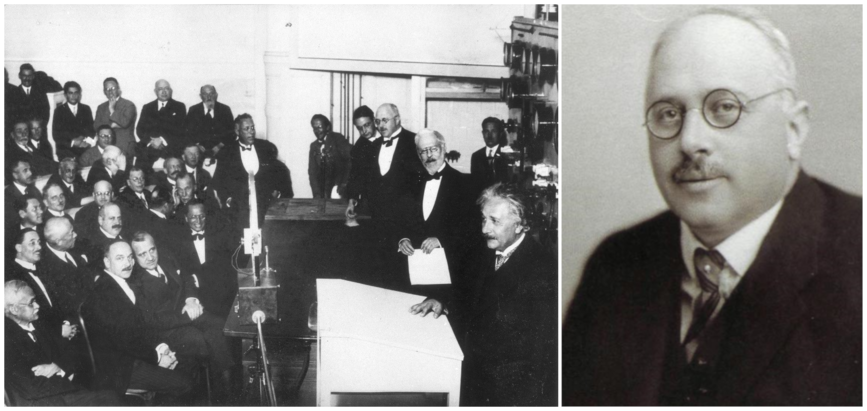FELIX EHRENHAFT: A DISONANT VOICE FROM VIENNA – OR THE COST OF BEING AGAINST PARADIGMS
02.02.2021
The son of a Jewish middle-class family, Felix Albert Ehrenhaft was born in Vienna on April 24, 1879. After his military service, he entered the University of Vienna and earned his Ph.D. in physics, as well as the title of mechanical engineer in 1923. In 1907 he demonstrated the Brownian movement in gases. He then became Privatdozent and later Professor at the same university, having engaged in building an apparatus that allowed him to measure the electron charge, for which he won international prestige, achieving an accuracy superior to other scientists, as Robert Millikan. However, his fame declined as Ehrenhaft insisted on having also found fraction values, like 2/3 or 4/3 of the “elementary” charge. He seemed with this result to side with Ernst Mach, in terms of denying the electron the status of an indivisible particle.
He fought with the Austrian artillery during Word War I, and afterwards Ehrenhaft started a new research, claiming the discovery of photophoresis, the movement by light of suspended particles. Still enjoying consideration from the academic world as a fine experimental physicist, he was deemed a natural candidate to replace the Physics Department director, Franz Exner, who had retired. However, Ehrenhaft also faced domestic and foreign opposition from those who accused him of entertaining extravagant ideas. In an apparently political decision, the university created for him a second Physics Institute.
Despite great scientific differences, directing the new institute Ehrenhaft had the chance to host many visits undertaken by Einstein to Vienna during 1921-31. The rift between them increased after Ehrenhaft published texts based on his experiments with alleged separation of north and south magnetic poles, a heavy blow on Maxwell’s electromagnetism. Anti-Semitism rose after 1933, and even having previously converted to Catholicism, Ehrenhaft was forced to flee in 1939, and ended up in the United States. In the new country, he was unable to find a position, and he was financially supported by his third wife, the Austrian sculptress Lilly Rona. He insisted with Einstein to let him show his experiments that would demonstrate the existence of magnetic currents, but he was rebuffed by Einstein, who greatly influenced the international physics community. At this point a very unusual duel between Einstein and Lilly took place with the exchange of many poems written by both in German, but the verbal fight came to an end when the Ehrenhaft couple broke their bonds with Einstein, in open mistrust.
With the end of World War II, Ehrenhaft decided to return to Austria, after Einstein recommended the authorities to let him go and retire, to teach only History of Science, considered inoffensive. Yet retirement was not in Ehrenhaft’s mind, and in 1947 he was reinstated as professor at the University, resumed his research on magnetism, and was able to convince students at first skeptical, like the Viennese Paul Feyerabend, that it was possible to separate magnetic monopoles. Controversial and outcast from conventional physics, he died in Vienna on March 4, 1952.
Further reading
Braunbeck, Joseph. (2003). Der andere Physiker. Das Leben von Felix Ehrenhaft. Wien/Graz: Technisches Museum & Leykam.
Dirac, Paul. (1977). “Ehrenhaft, the subelectron and the quark”, in C. Weiner (ed.), History of twentieth century physics. Proceedings of the International School of Physics Enrico Fermi. New York and London: Academic Press.
Feyerabend, Paul. (1995). Killing time. The Autobiography of Paul Feyerabend. Chicago: University of Chicago Press.
Makus, Andreas. (2002). “Der Physiker Felix Ehrenhaft (1879–1952) und die Bestimmung der Elementarladung. Ein Versuchsnachbau’, Blätter für Technikgeschichte 64: 25–45.
Santos, Gildo M. (2010). "A debate on magnetic current: the troubled Einstein–Ehrenhaft correspondence". British Journal for the History of Science. 44 (3): 371–400

